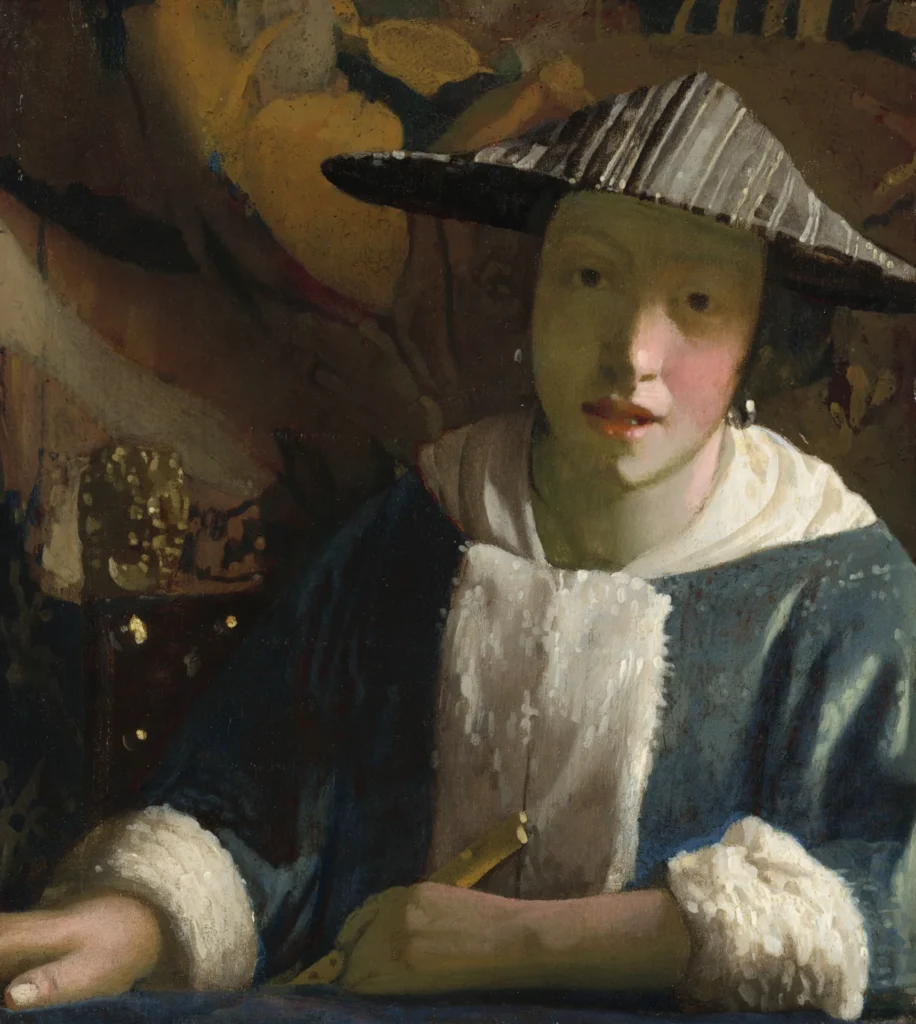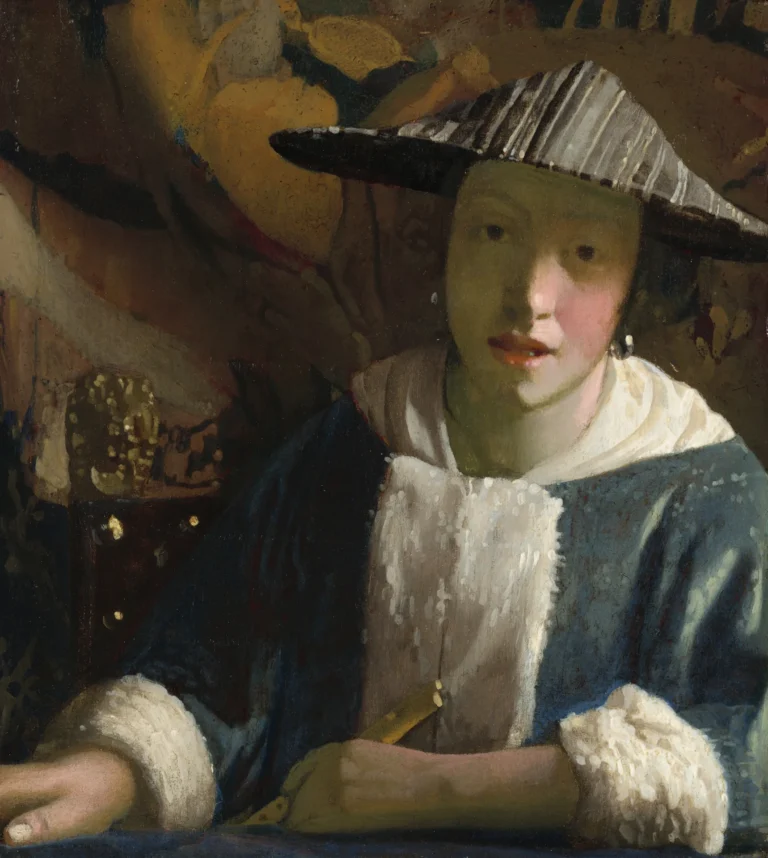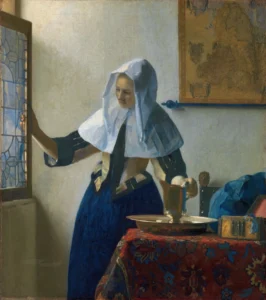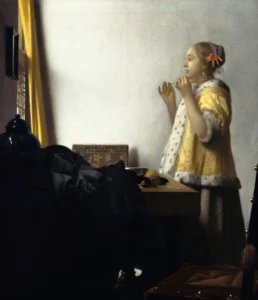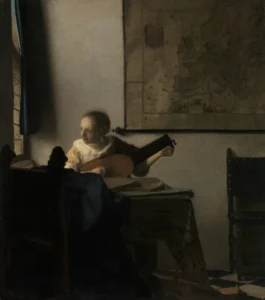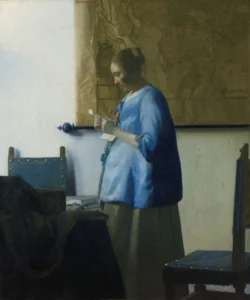Girl with a Flute (1665-1675)
This captivating painting, housed in the National Gallery of Art, depicts a woman in a boat-shaped hat and a fur-trimmed jacket, seated with a flute. Despite its initial attribution to the renowned Johannes Vermeer, recent scrutiny raises questions about its authorship, hinting at a possible connection to a student or associate rather than the master himself. The "tronie" style captures a moment of expression, yet its execution lacks the finesse characteristic of Vermeer's celebrated works.
1665-1675
About the Artwork
The journey of Girl with a Flute has been marked by intrigue and debate since its acquisition by the National Gallery of Art in 1942. Initially accepted as a genuine Vermeer, the painting's credibility faced challenges over the decades. Scholars began to scrutinize its distinctive features, which strayed from Vermeer's signature delicacy, revealing clumsy brushwork and a static composition. Art historians now suggest that the piece may represent a lesser-known artist influenced by Vermeer, highlighting the complexities of art attribution during the Dutch Golden Age. Furthermore, its ownership history traces back to Vermeer's patron, indicating the close ties this artwork has to significant figures in art history.
Did You Know
Liked what you see? Add it to your collection.
Enjoyed reading? Share it.
... continued
The painting Girl with a Flute. although long attributed to Johannes Vermeer, is now a subject of significant debate regarding its authorship.
Attribution
The attribution of Girl with a Flute to Vermeer has been questioned since 1942. Despite initial acceptance as a Vermeer work when it entered the National Gallery of Art in 1942, subsequent studies have cast doubt on this attribution. Scholars and conservators have noted that the painting lacks the delicacy and expertise characteristic of Vermeer's work. The brushwork is described as "heavy-handed" and "blocky," and the composition shows several weaknesses, such as the static and frontal pose of the figure, awkwardly articulated arms and hands, and a lack of form or volume in the background elements.
Style and Composition
The painting is a tronie, a study of a facial expression or a stock character in costume, a popular genre in Dutch Golden Age painting. It depicts a woman wearing a boat-shaped hat and a fur-trimmed jacket, seated by a patterned tapestry and holding a flute. However, the execution of the painting is considered inferior to Vermeer's known works, such as "Girl with a Red Hat," which is also housed at the National Gallery of Art.
Materials and Techniques
The painting is executed on a single-plank oak panel with a double ground, consistent with seventeenth-century Dutch painting techniques. However, the artist's use of materials and techniques, while similar to Vermeer's, does not match his level of skill. This has led to the suggestion that the painter might have been a pupil, apprentice, or associate of Vermeer rather than the master himself.
Ownership and History
The painting has had several owners throughout its history. It may have been first owned by the family of Vermeer's patron, Pieter van Ruijven, and was possibly sold at the 1696 Dissius auction in Amsterdam. It later belonged to various Dutch and Belgian families before being purchased by Joseph Widener and eventually entering the collection of the National Gallery of Art in 1942.
In summary, while Girl with a Flute was once attributed to Johannes Vermeer, current scholarly consensus suggests that it was likely painted by someone familiar with Vermeer's methods but lacking his expertise.




